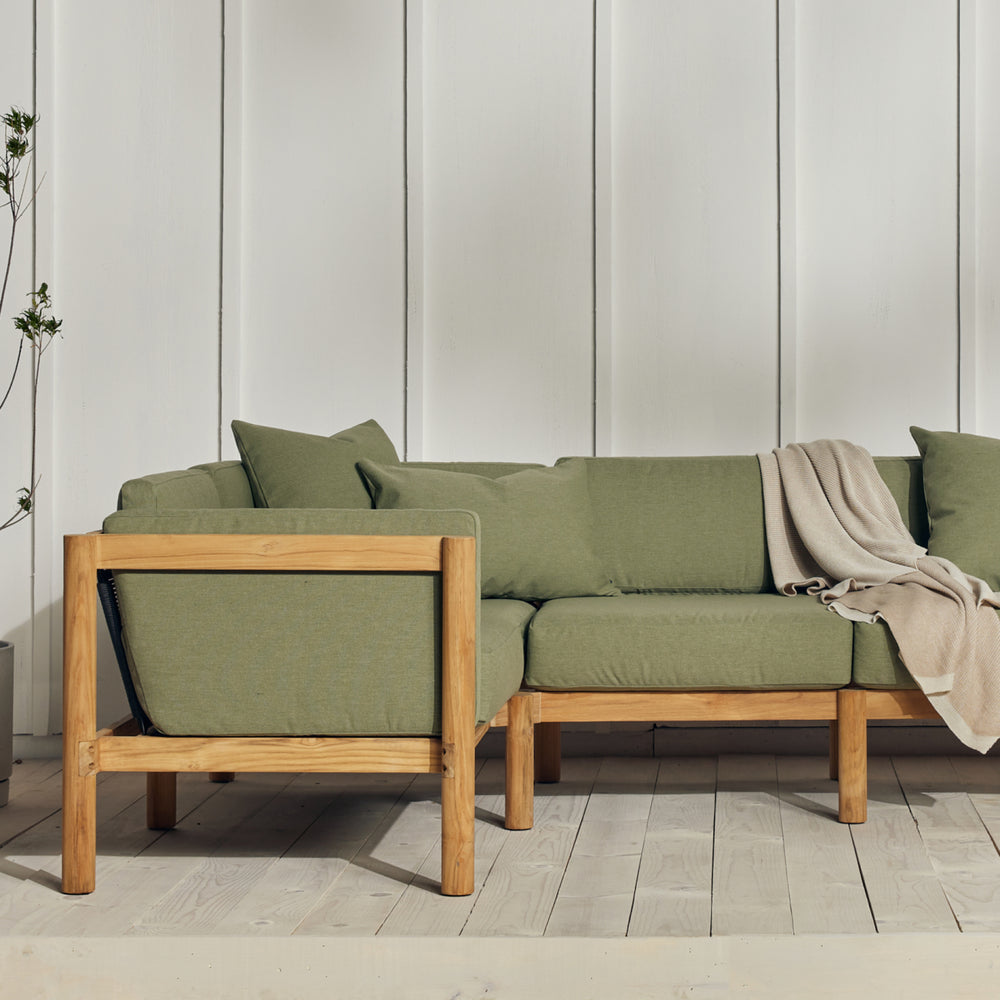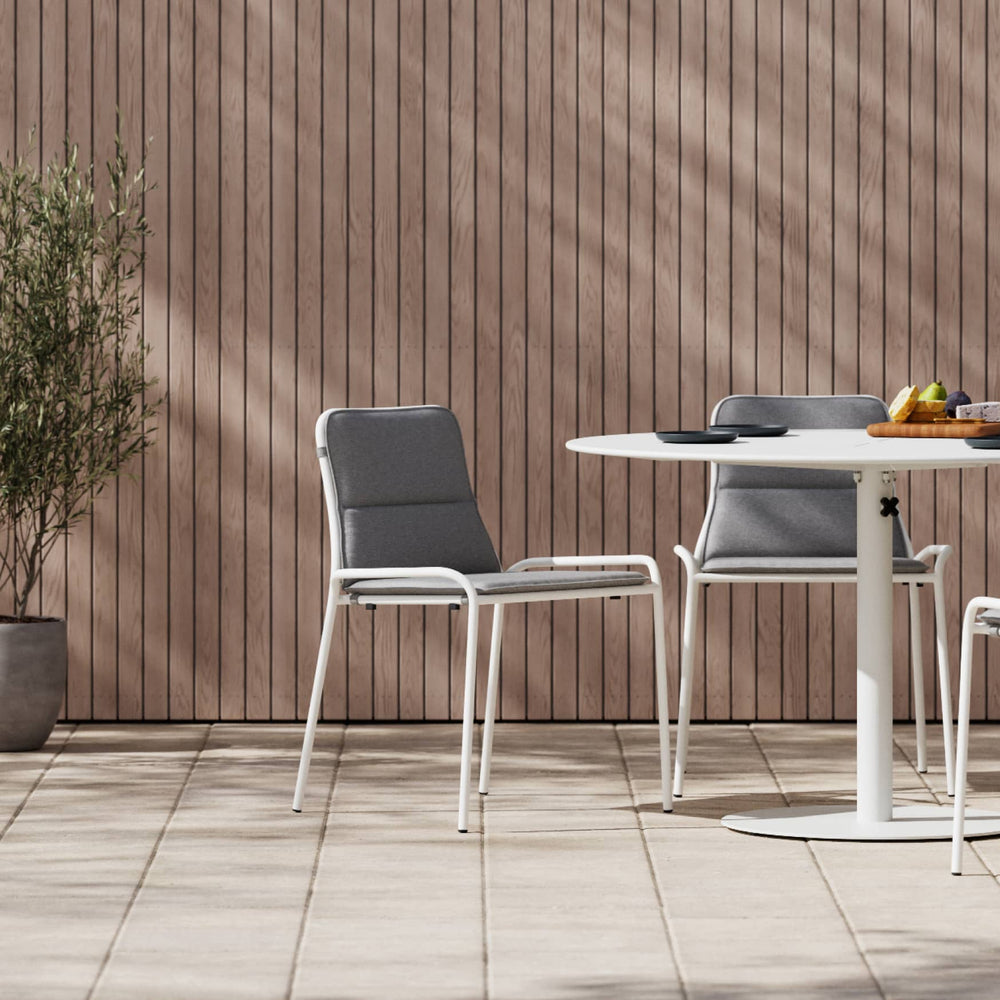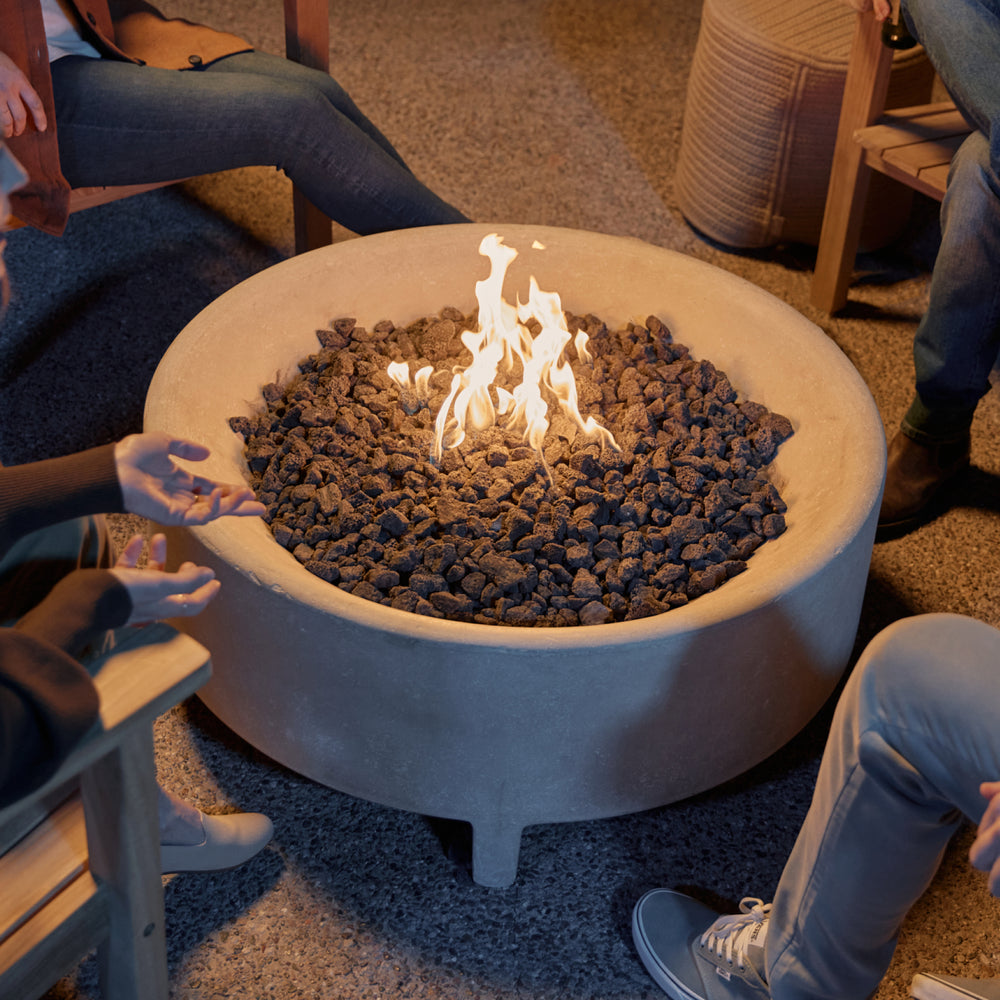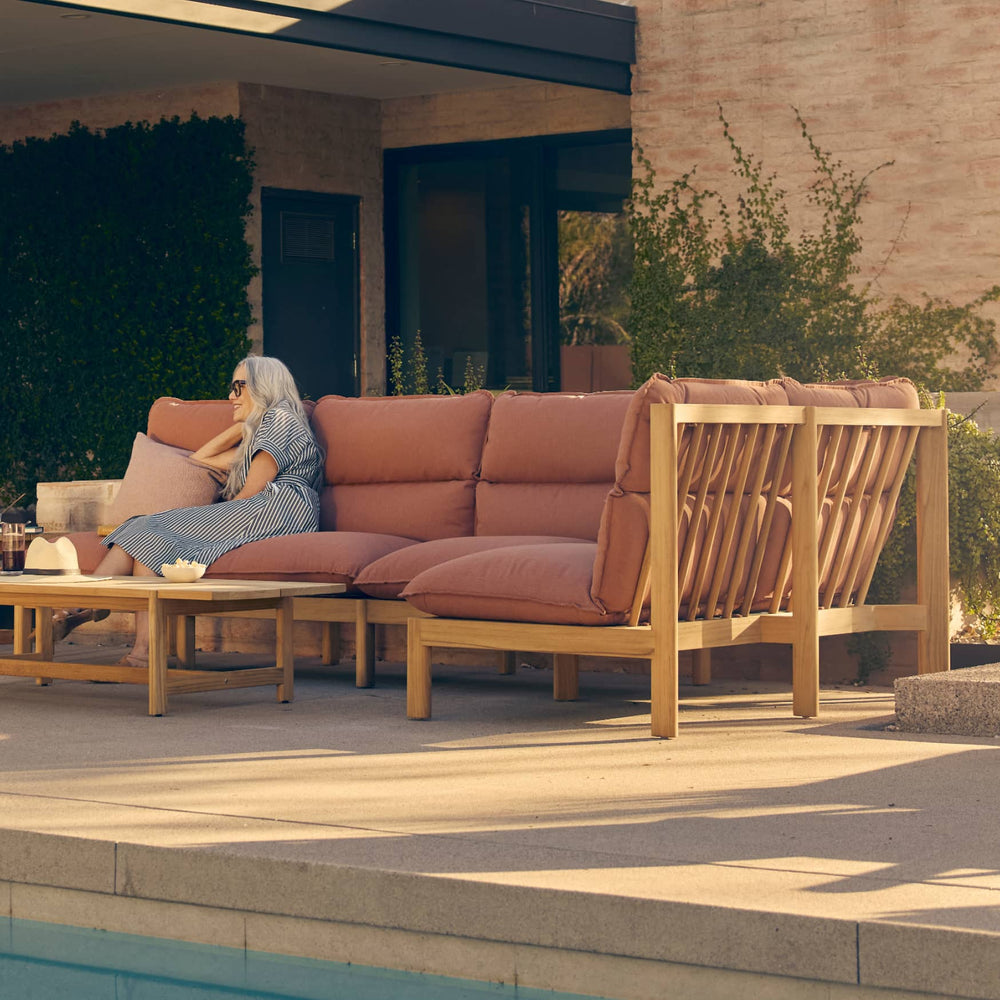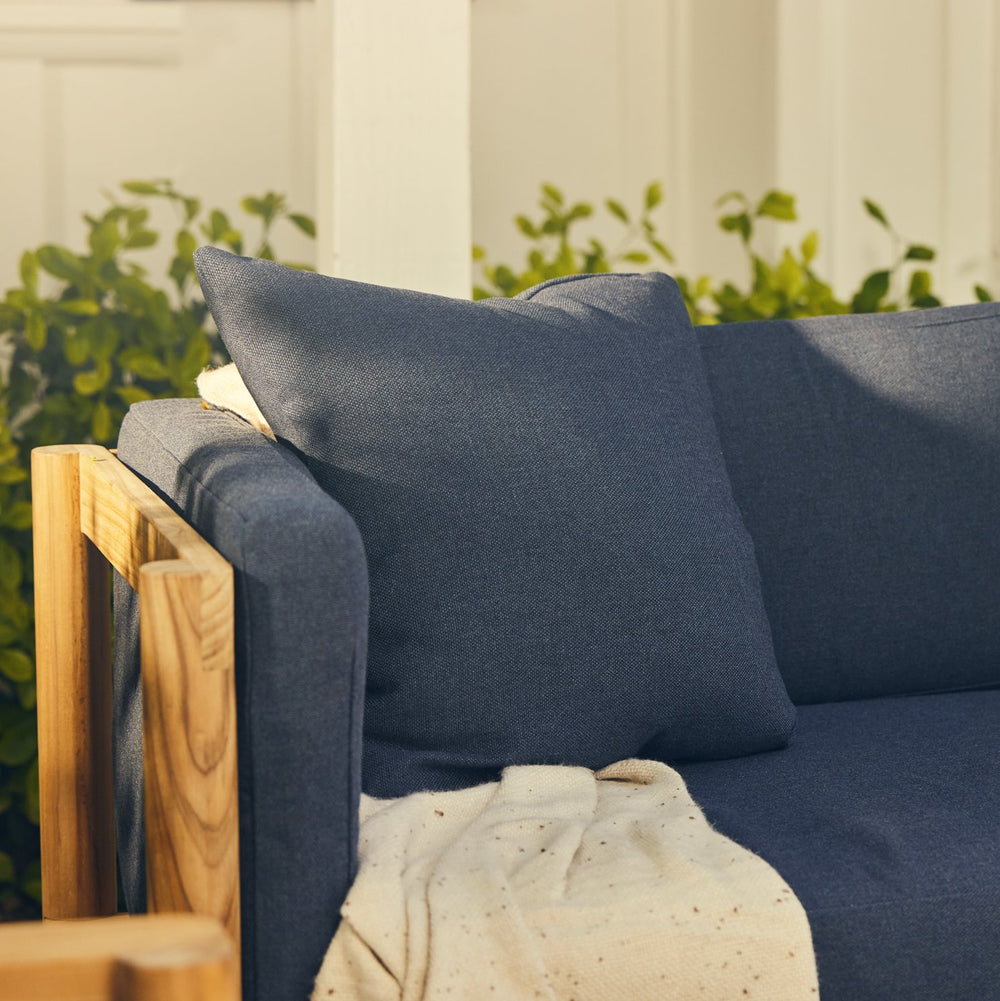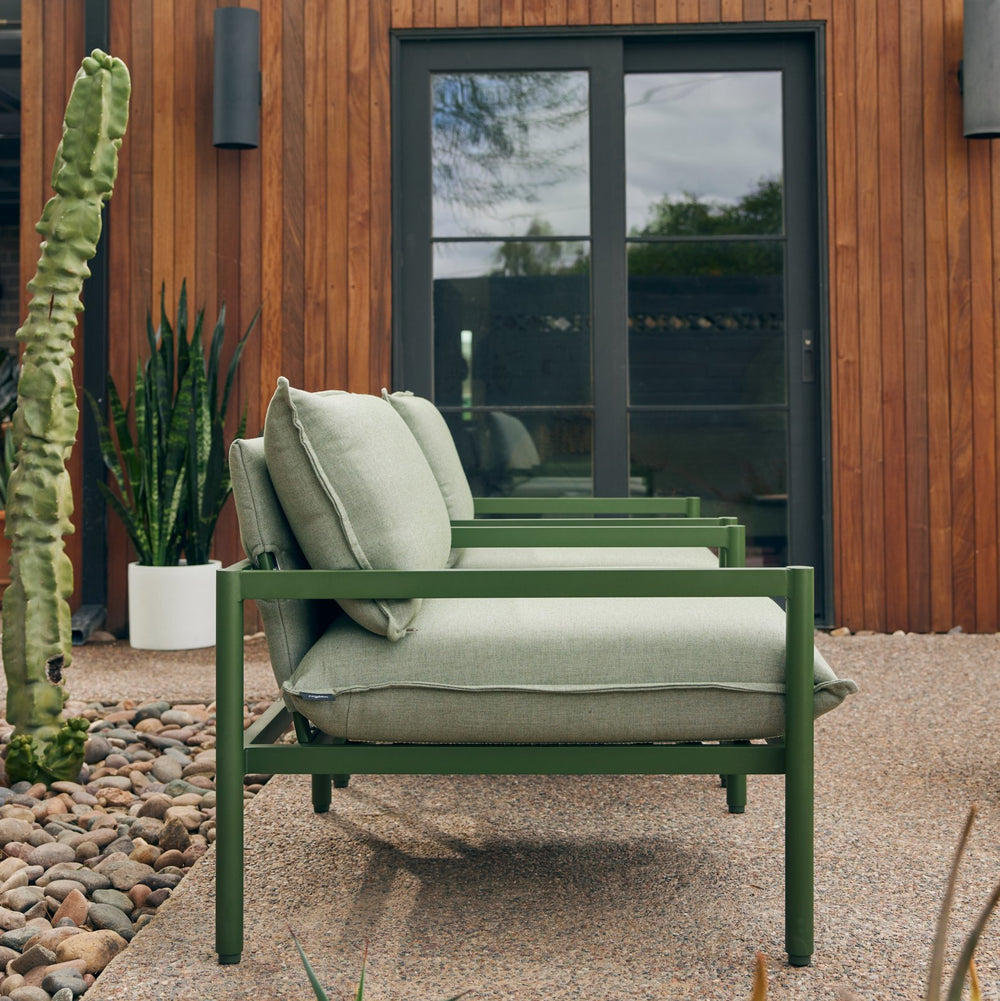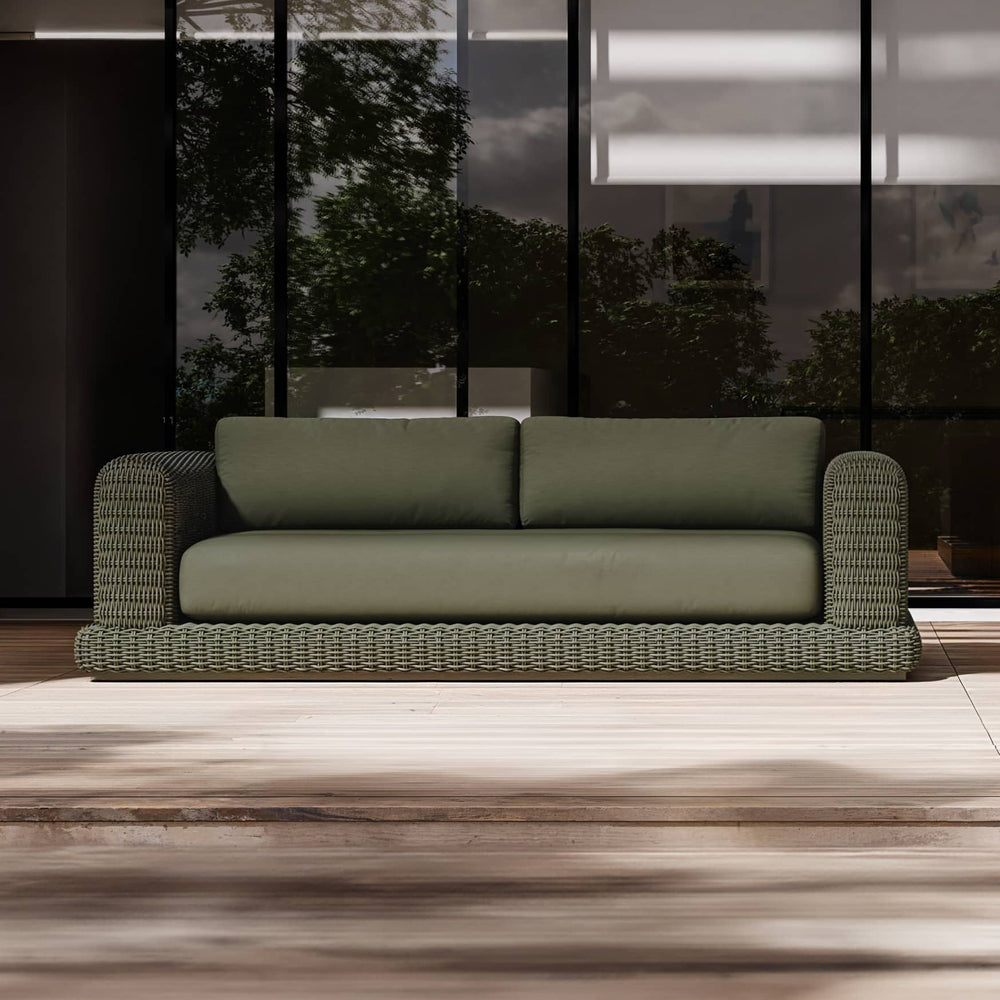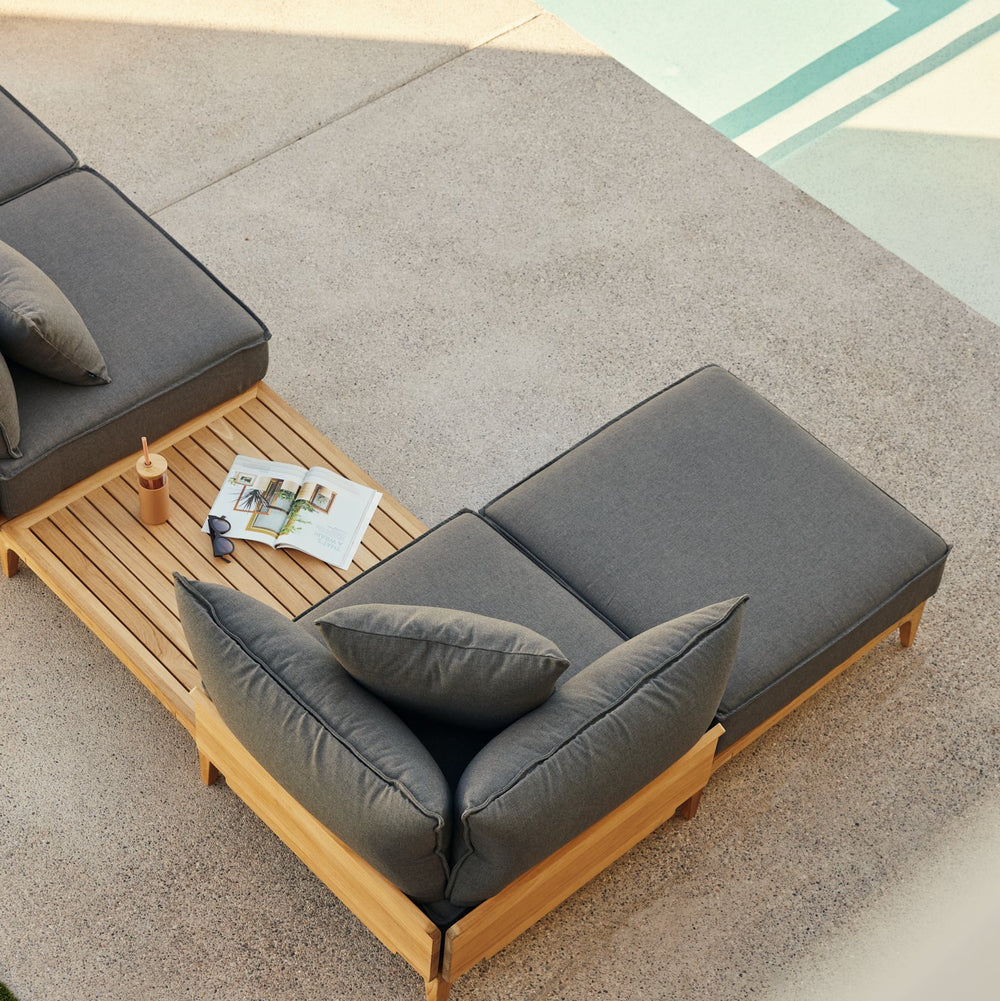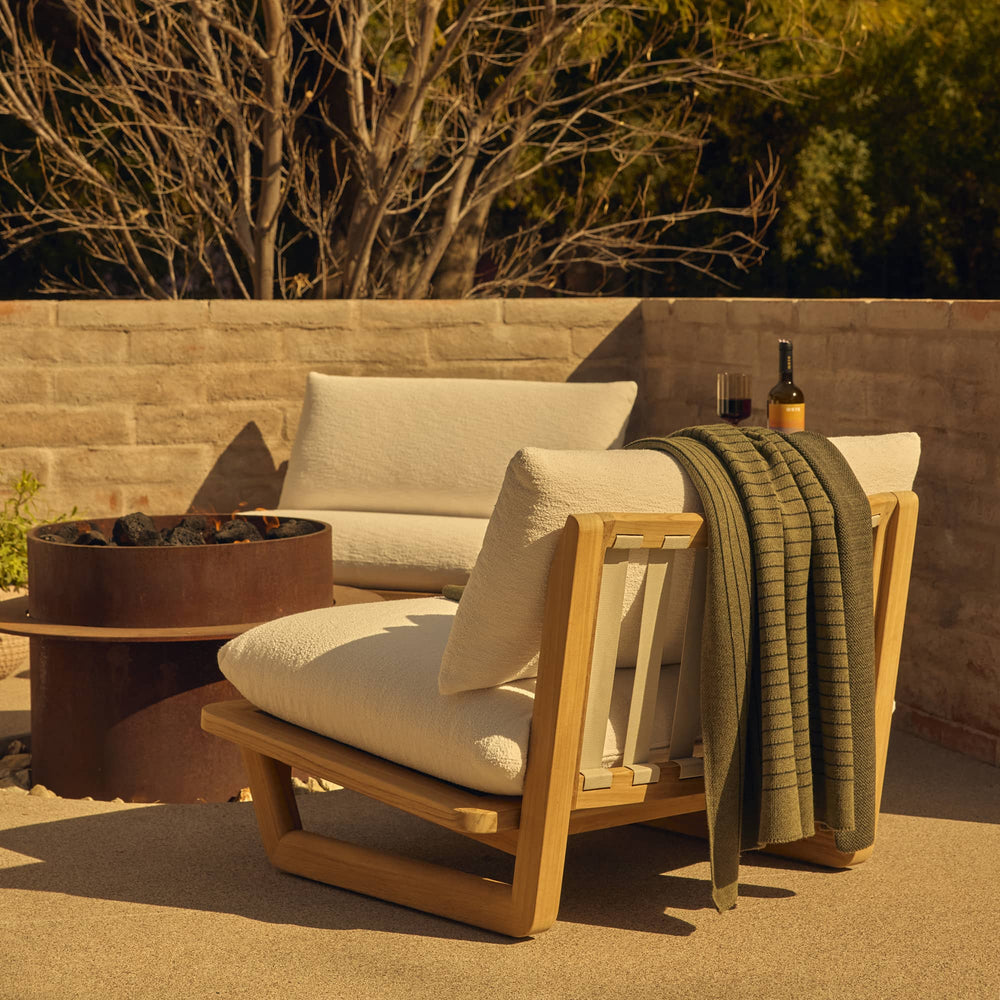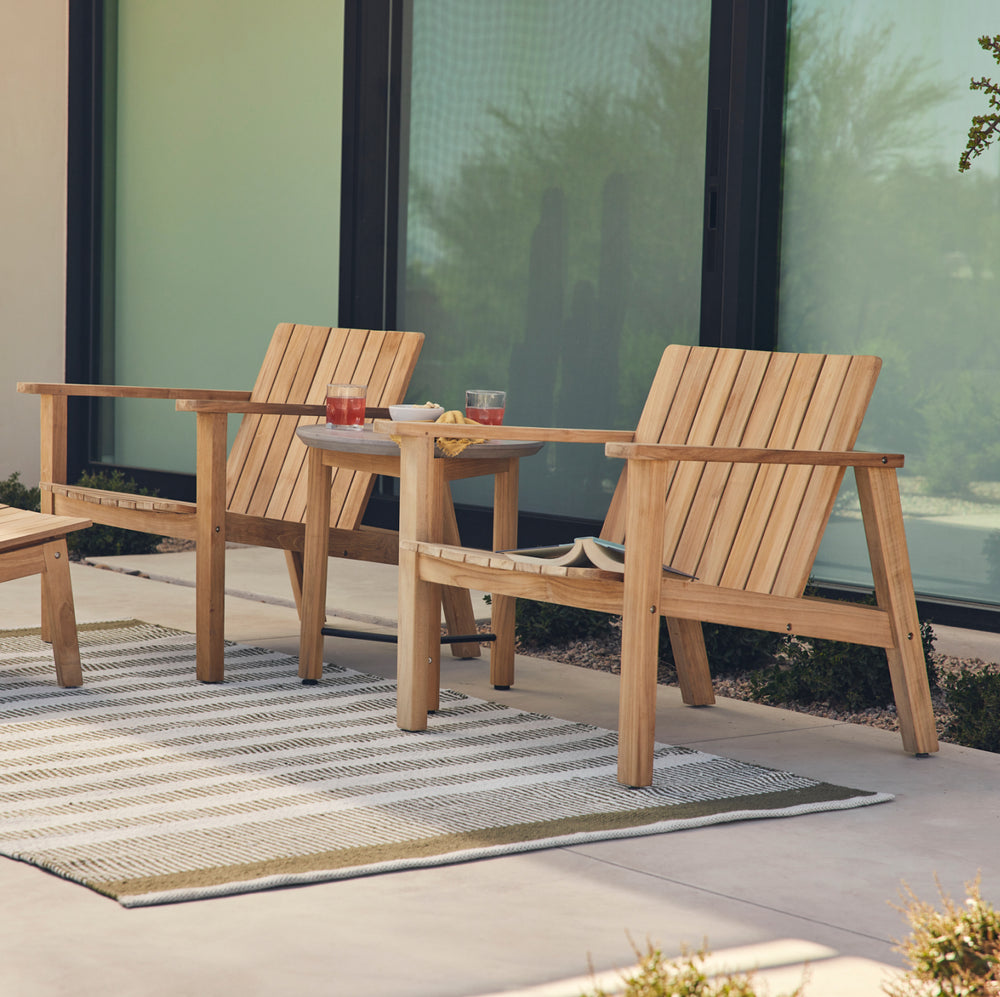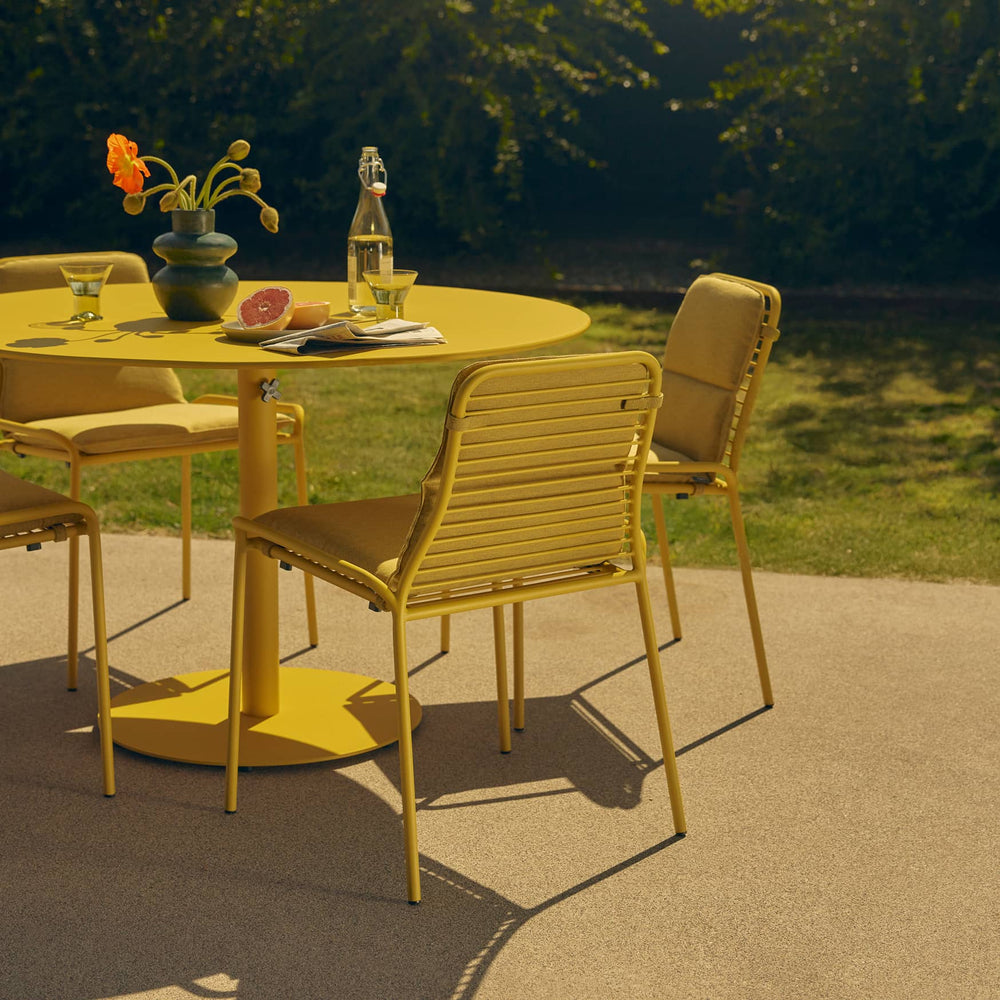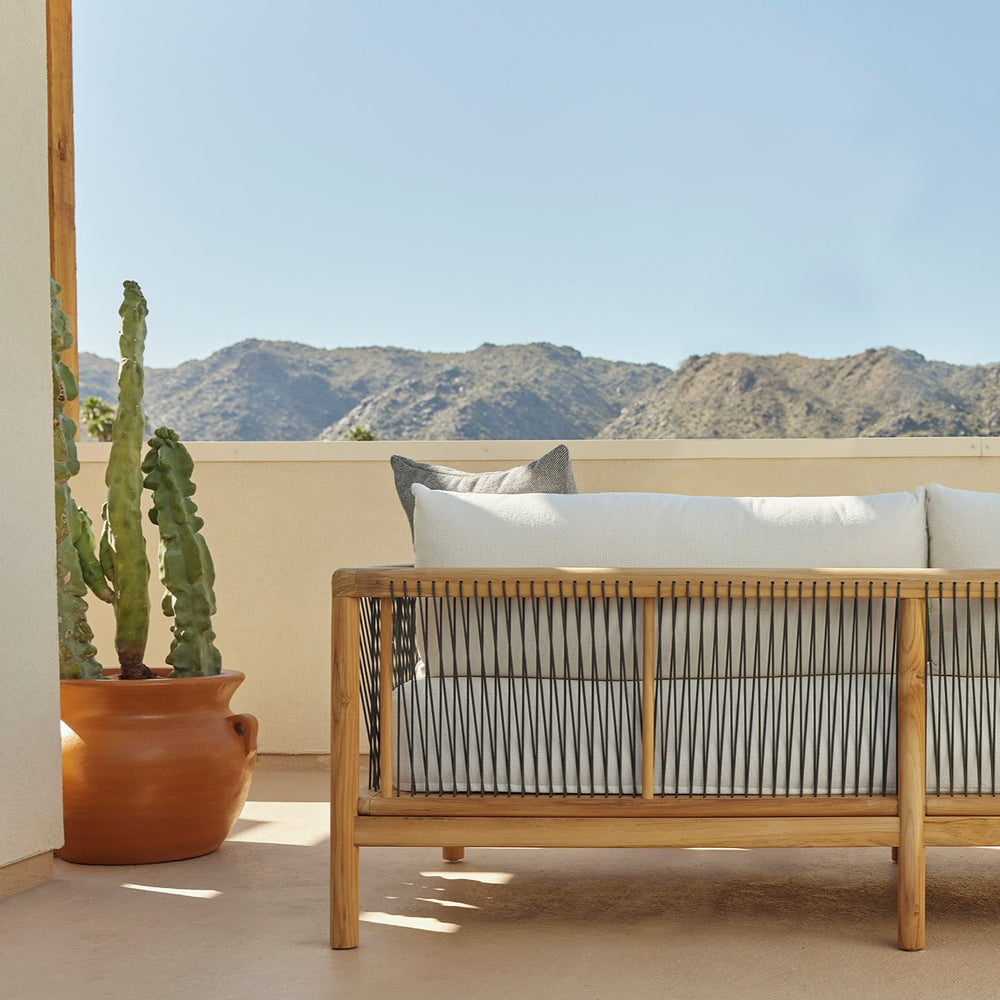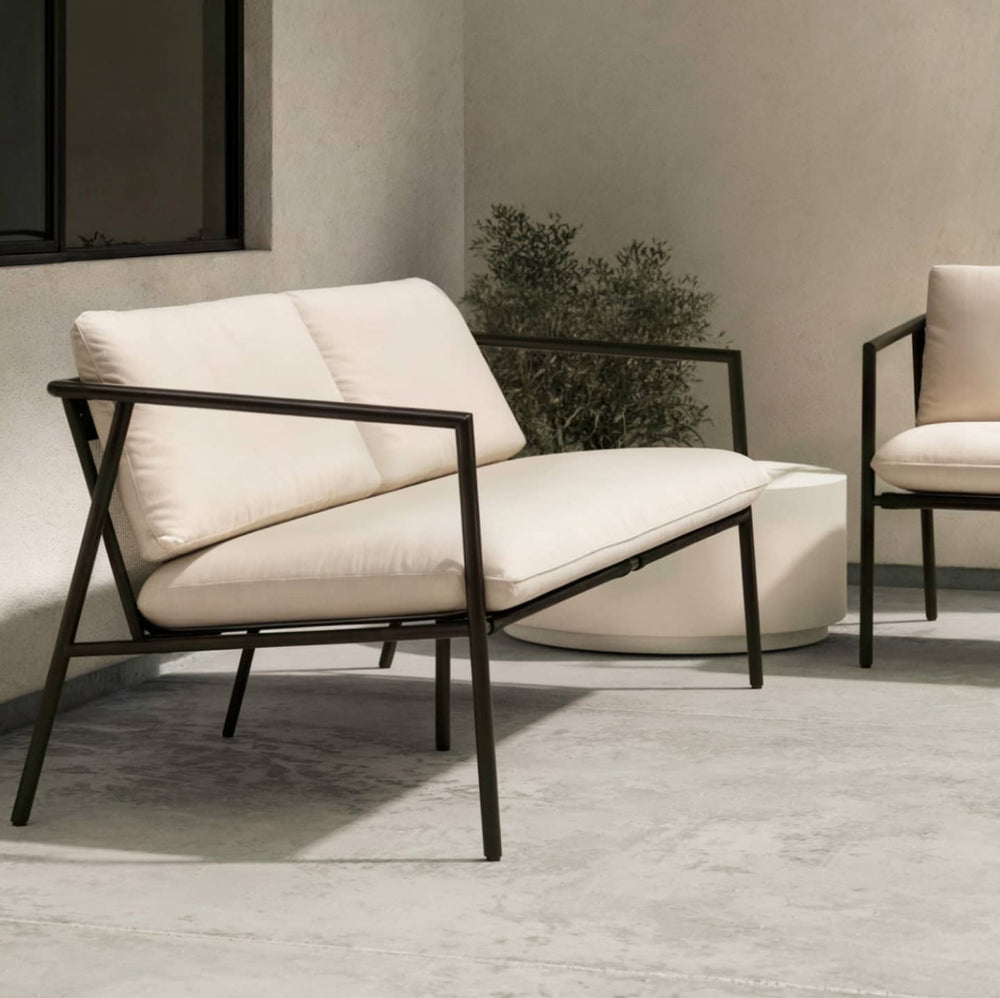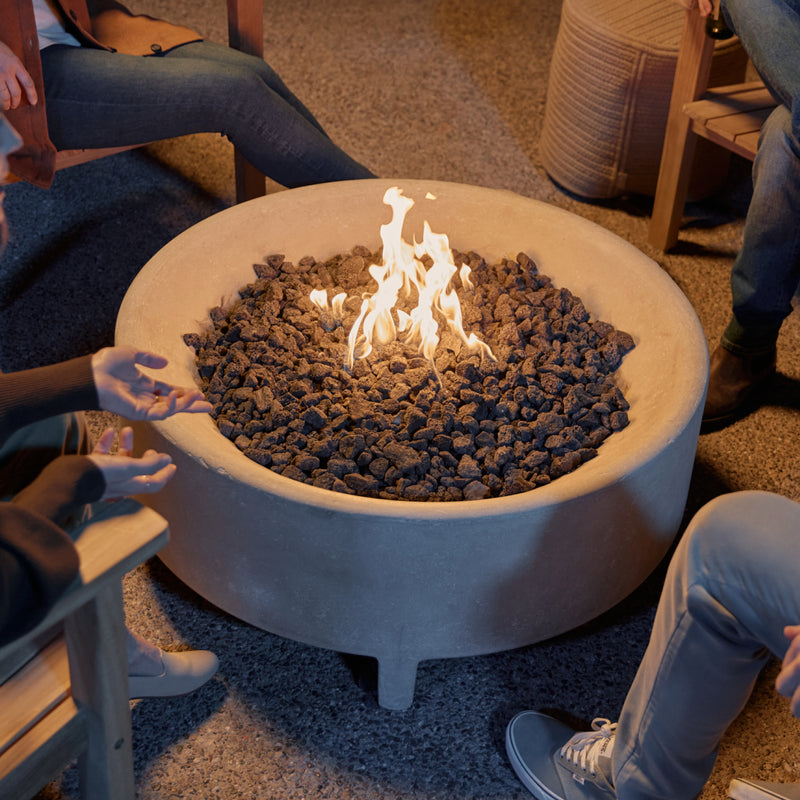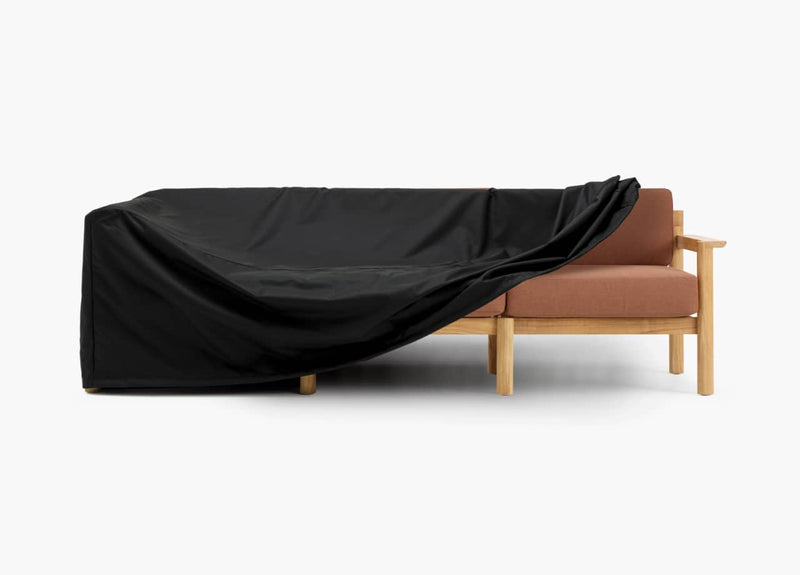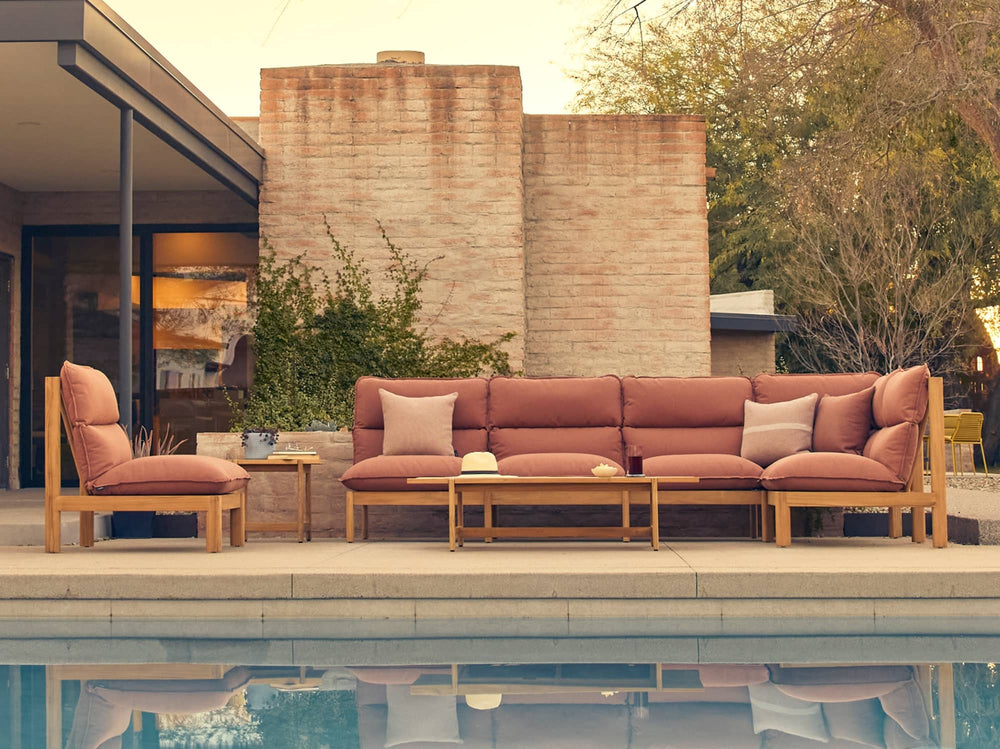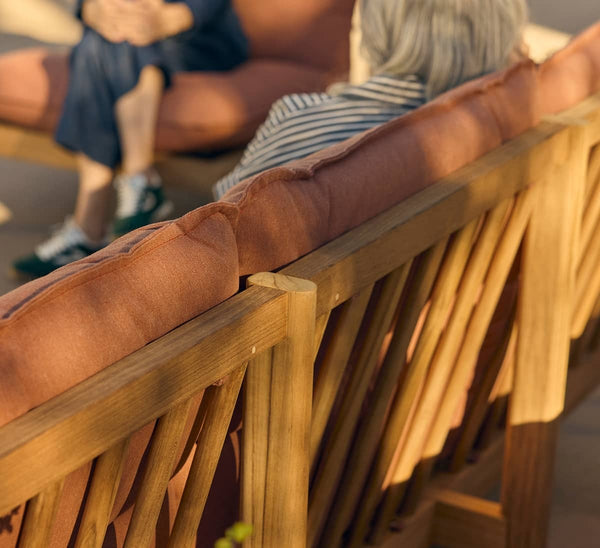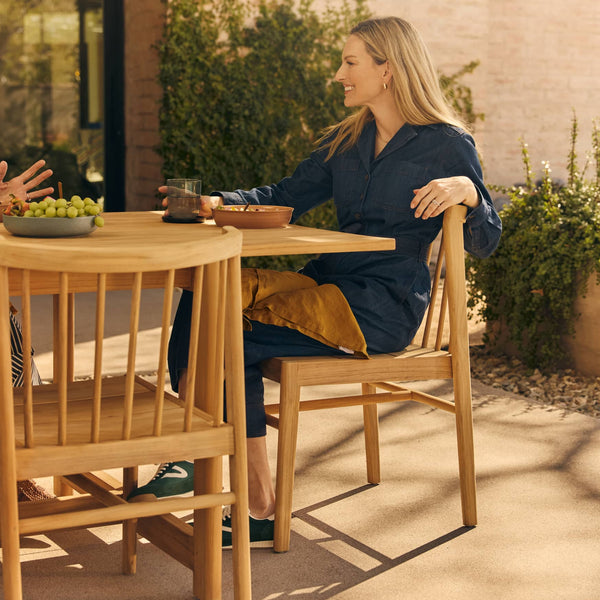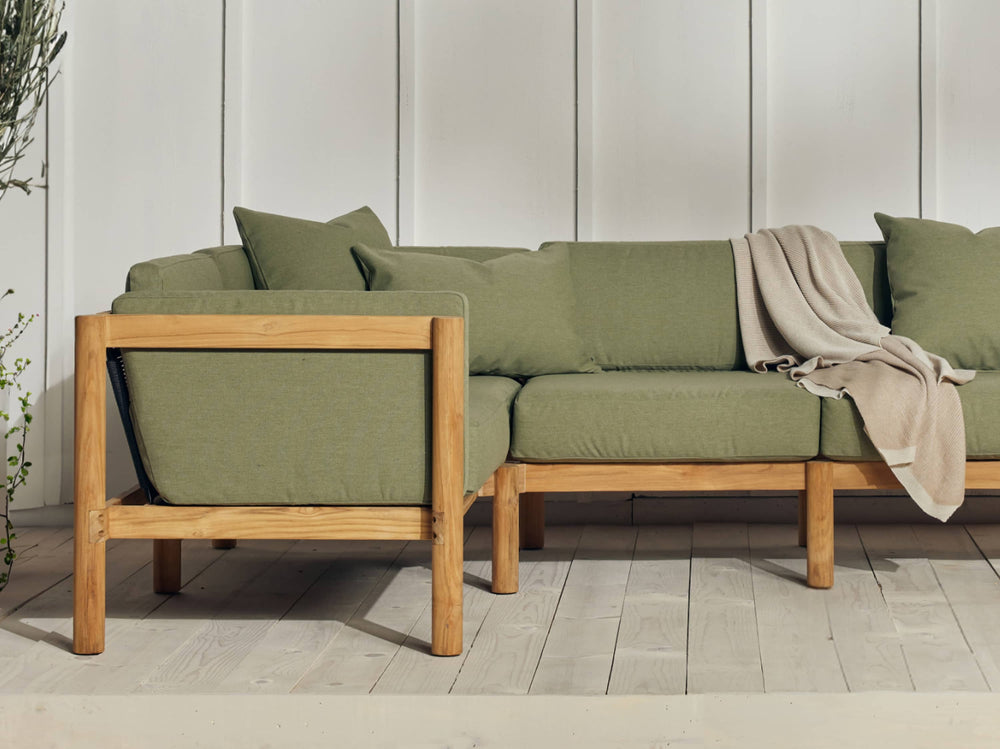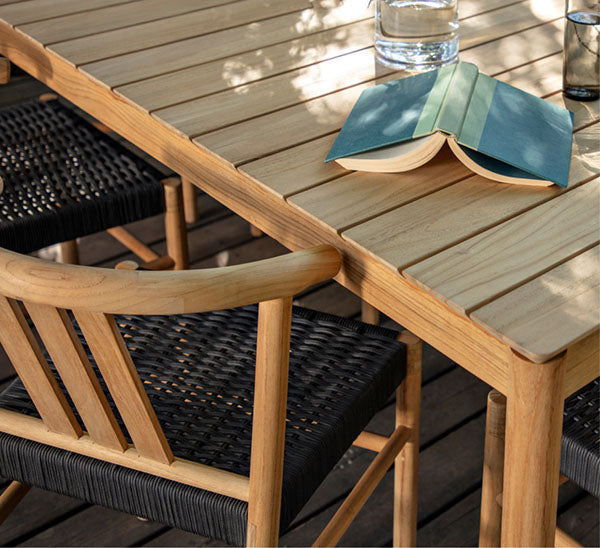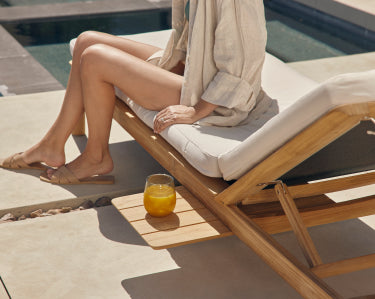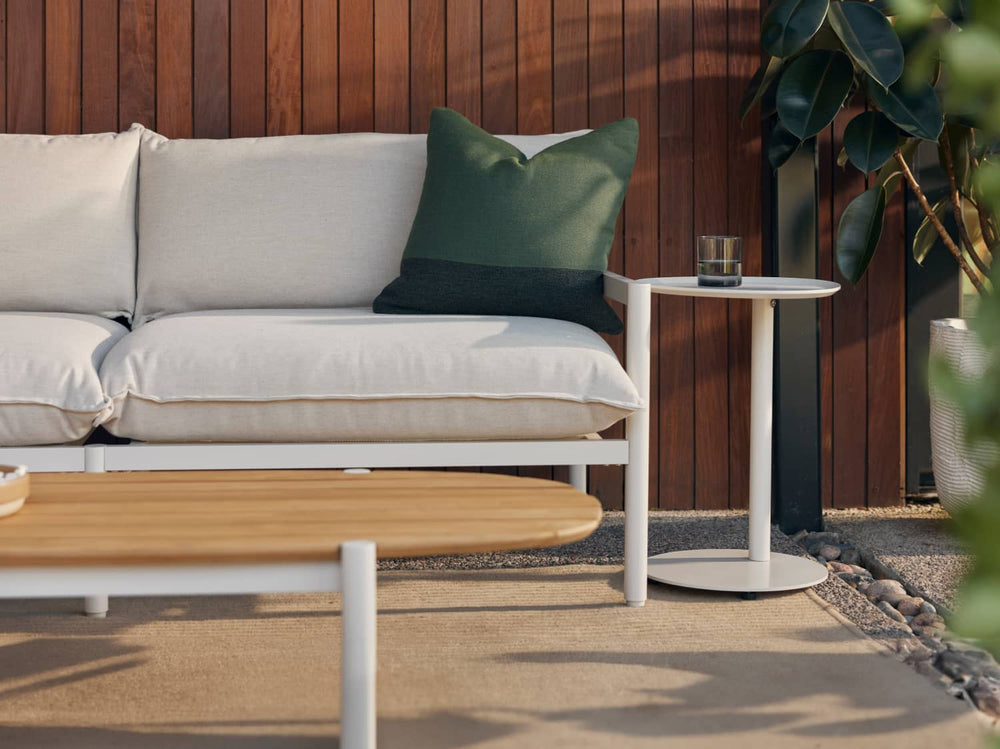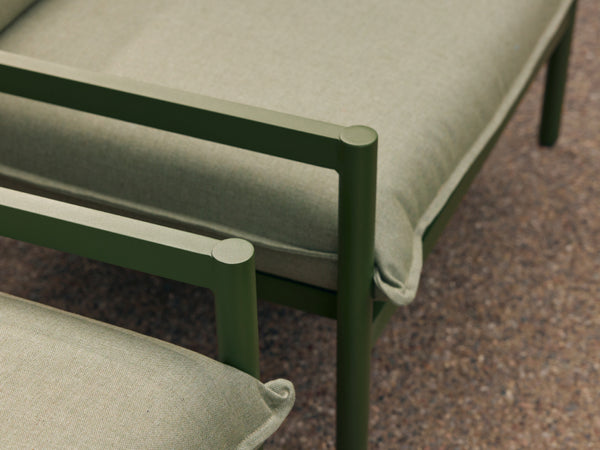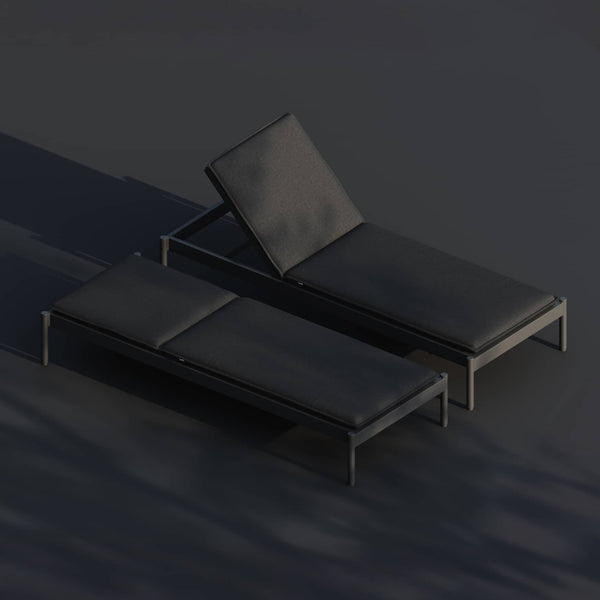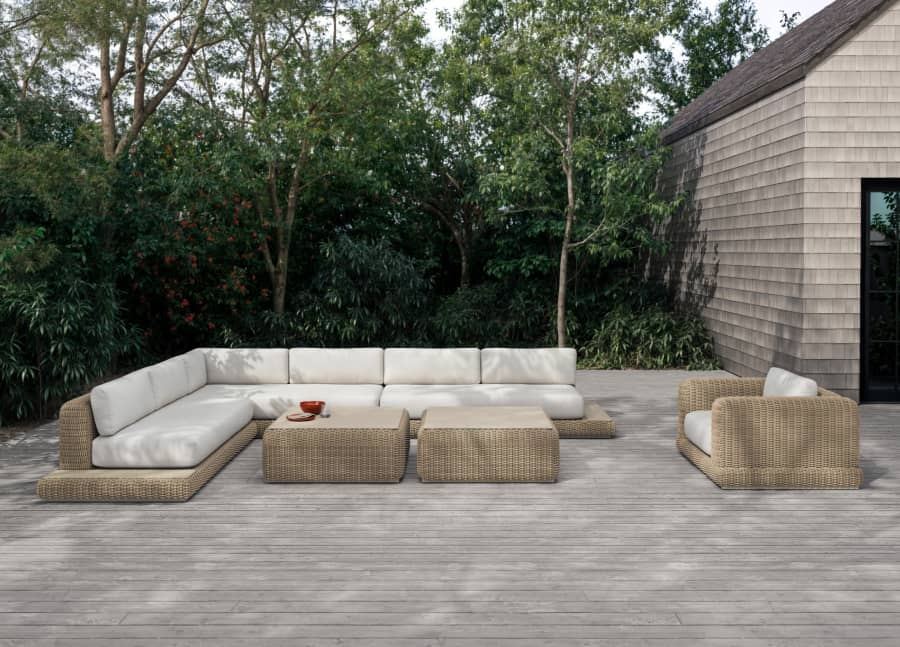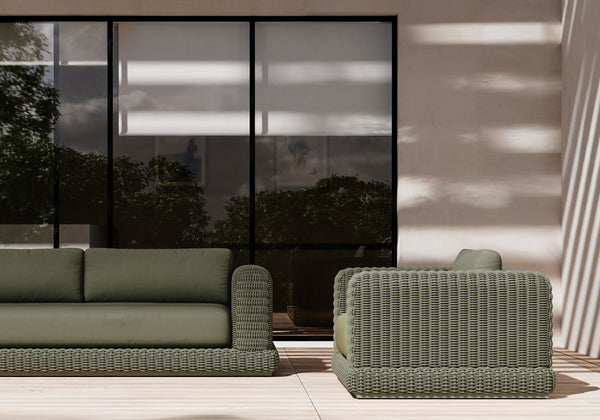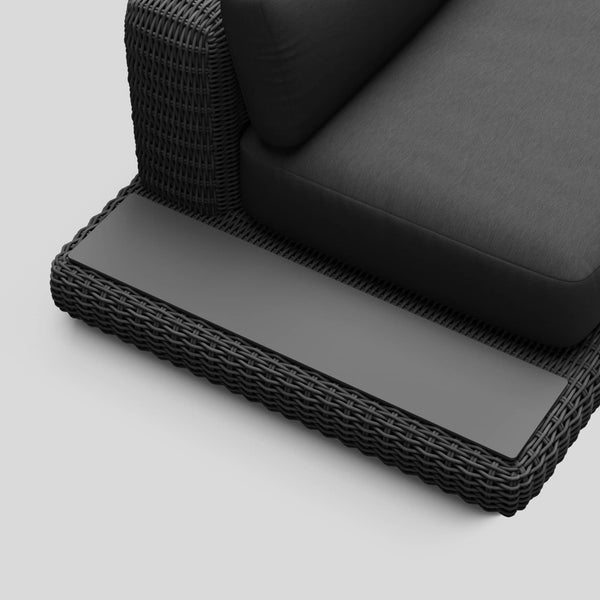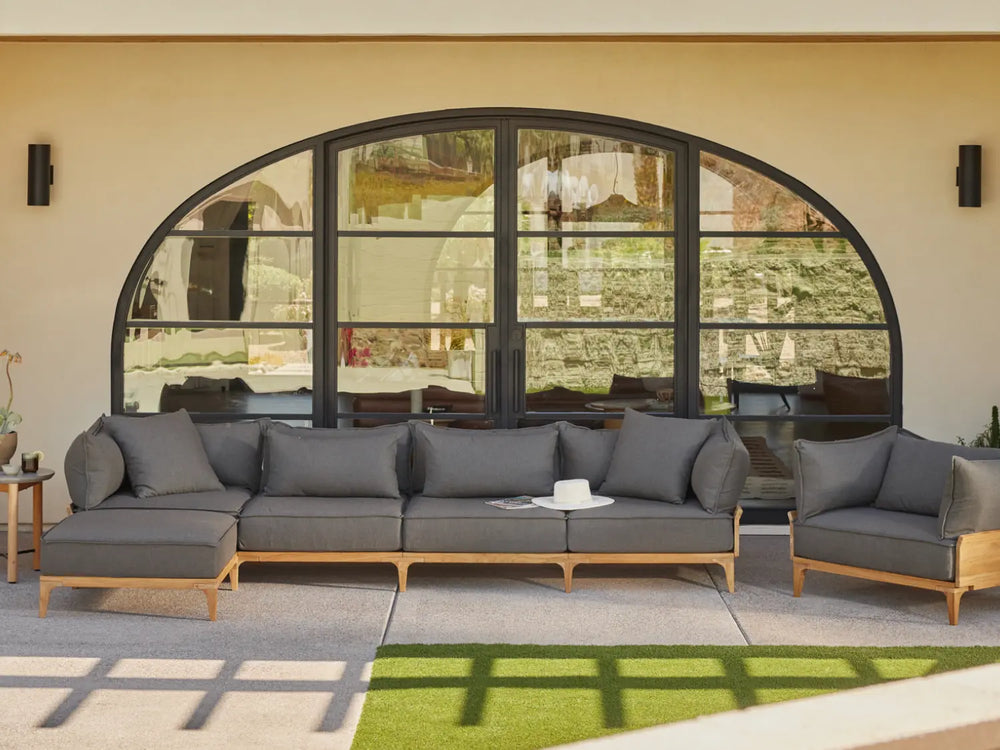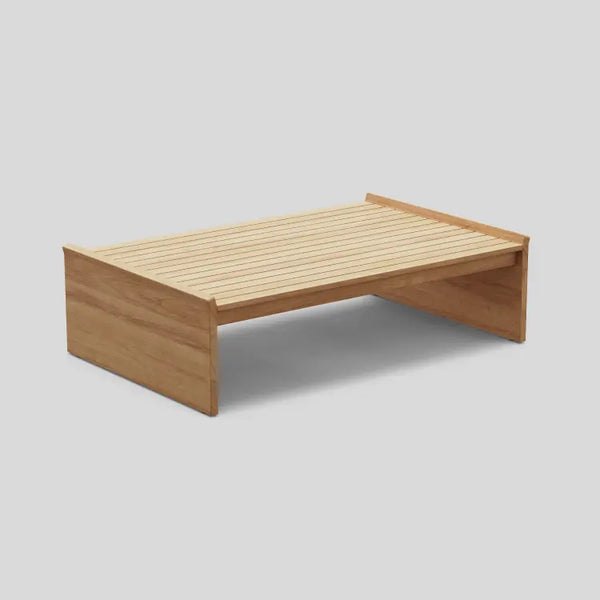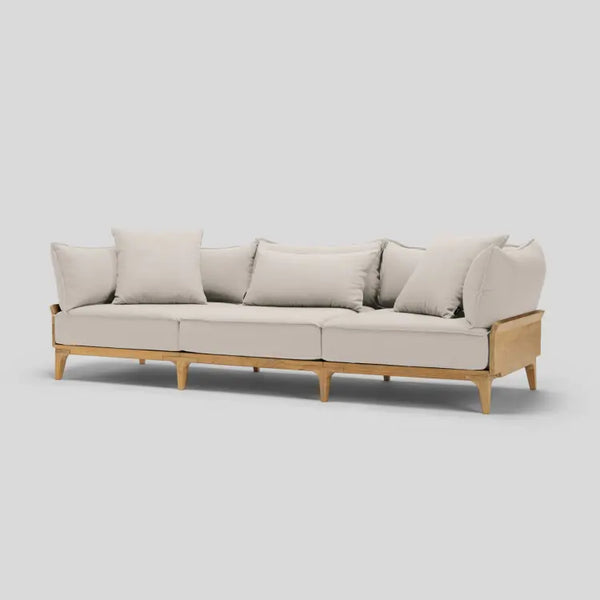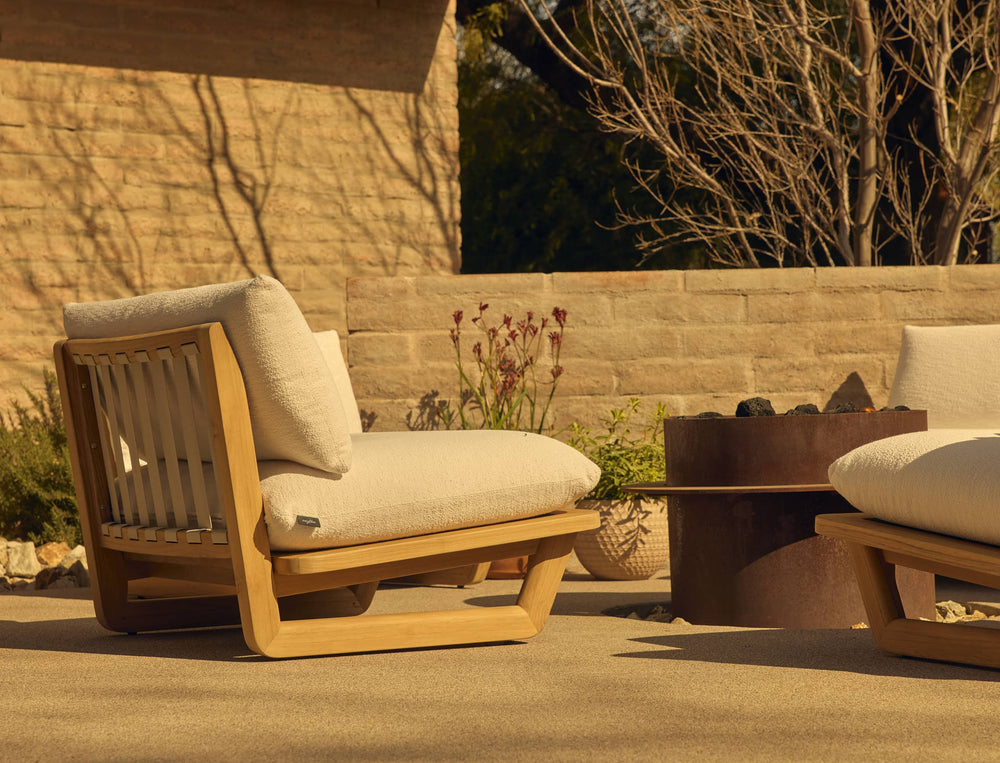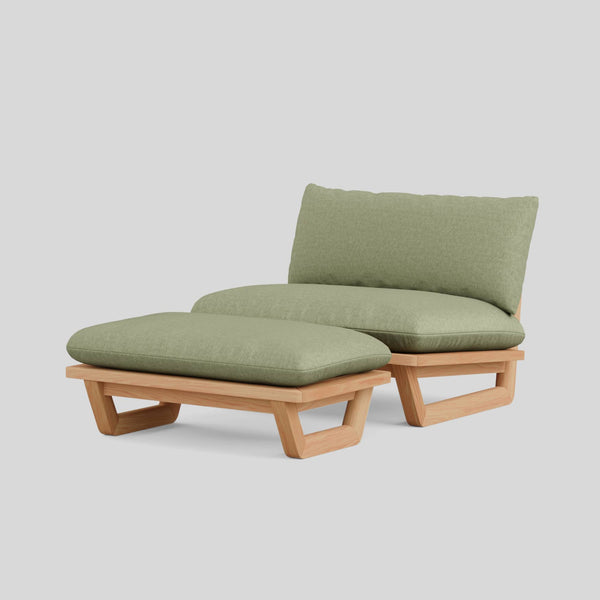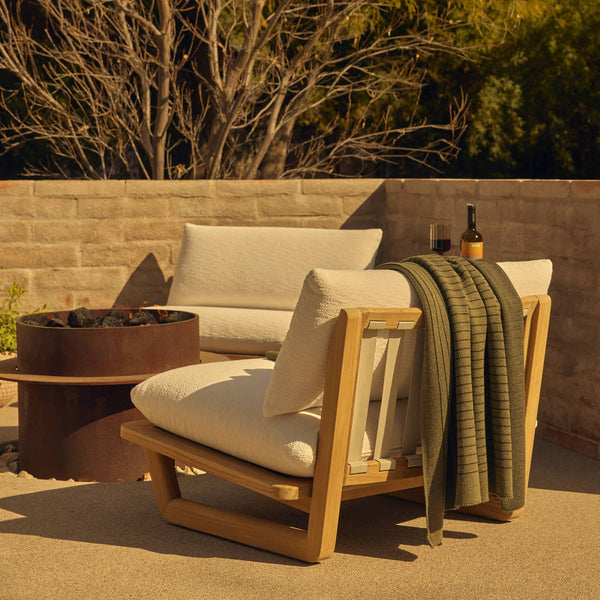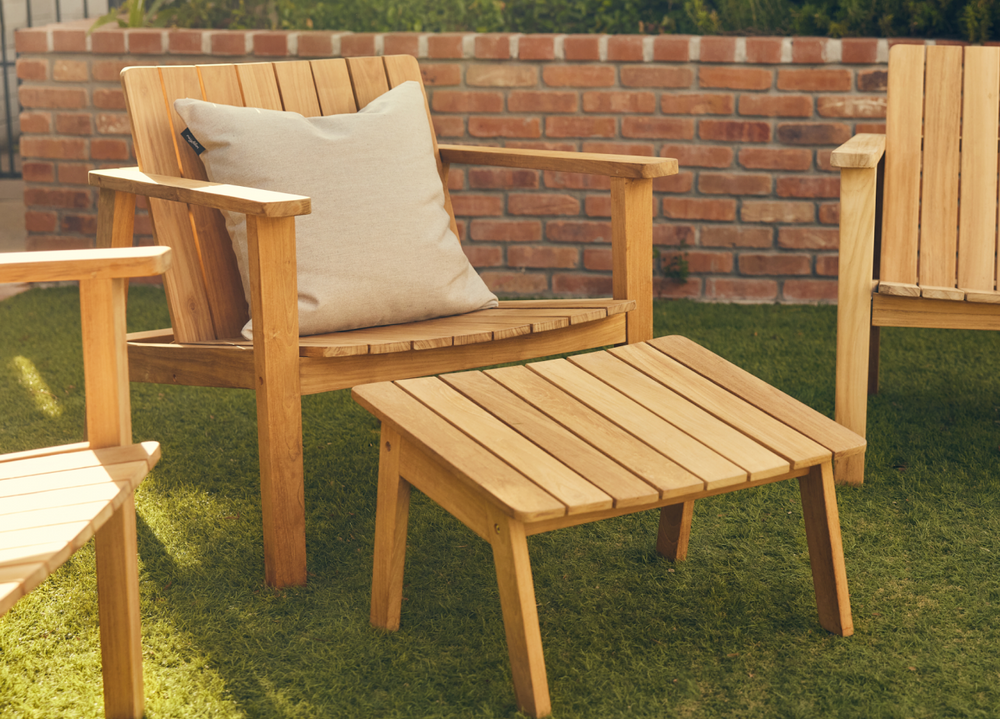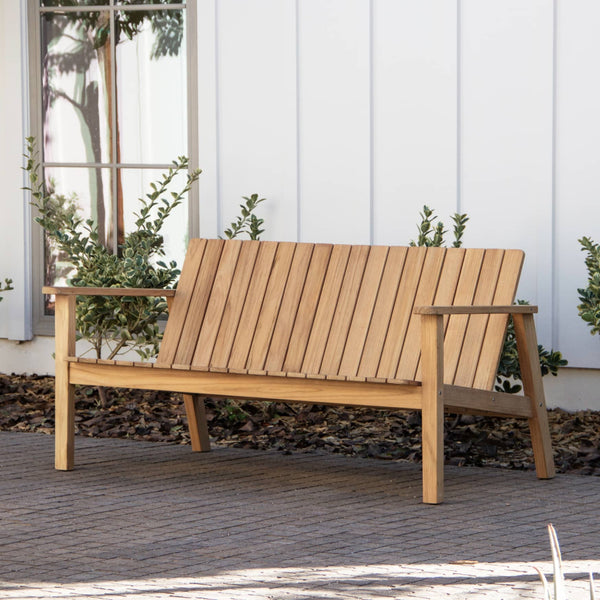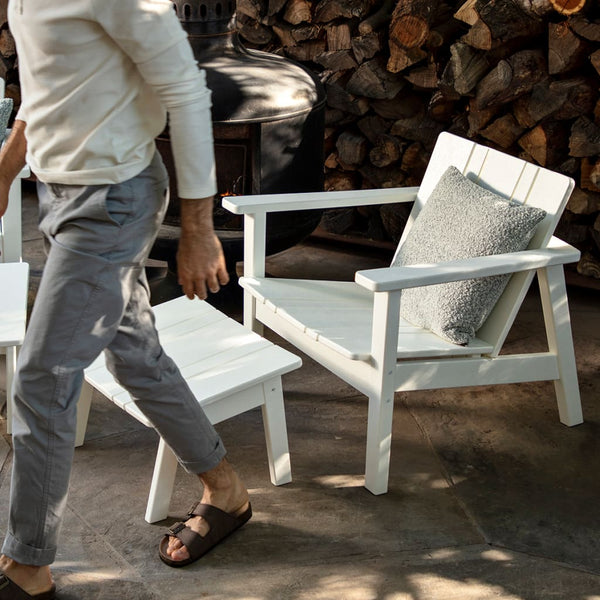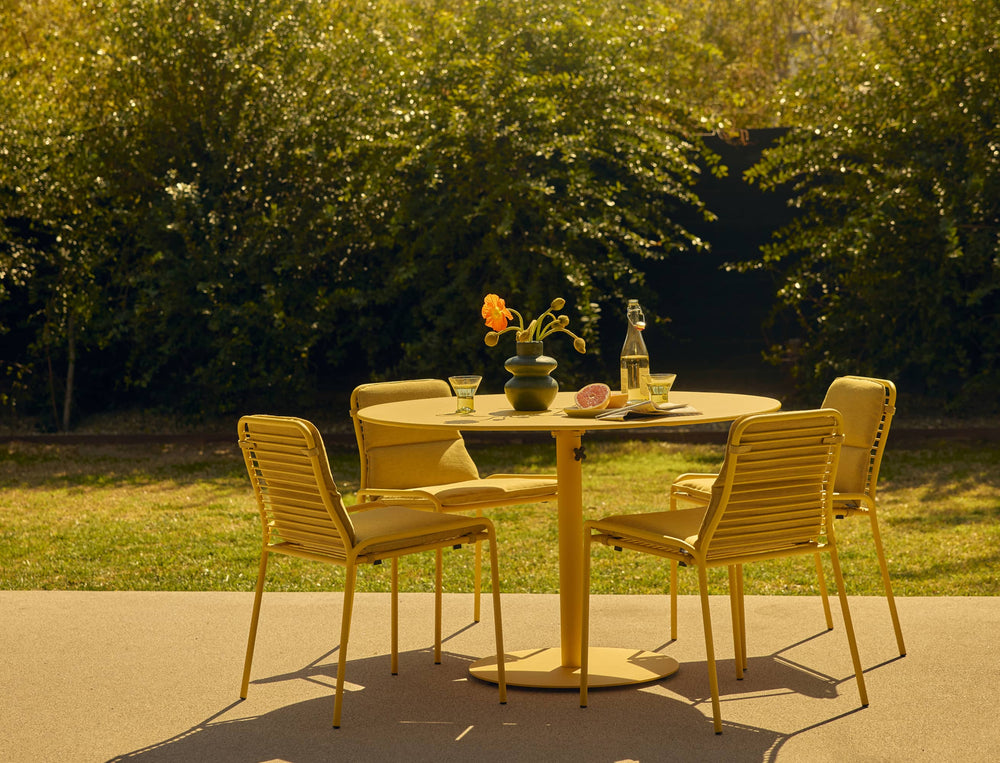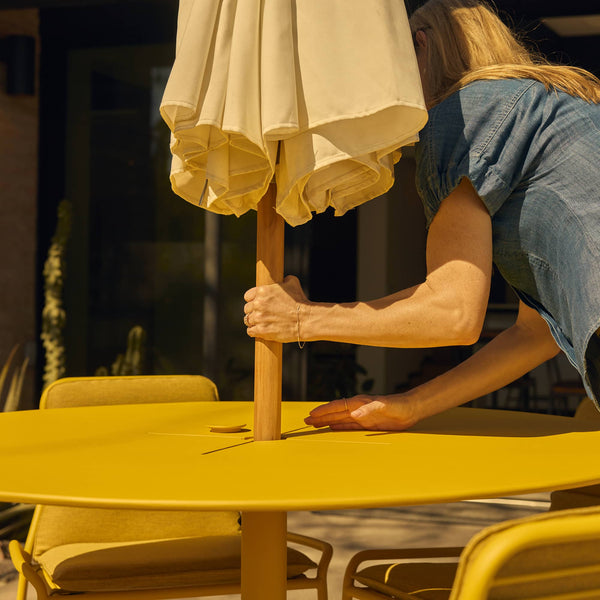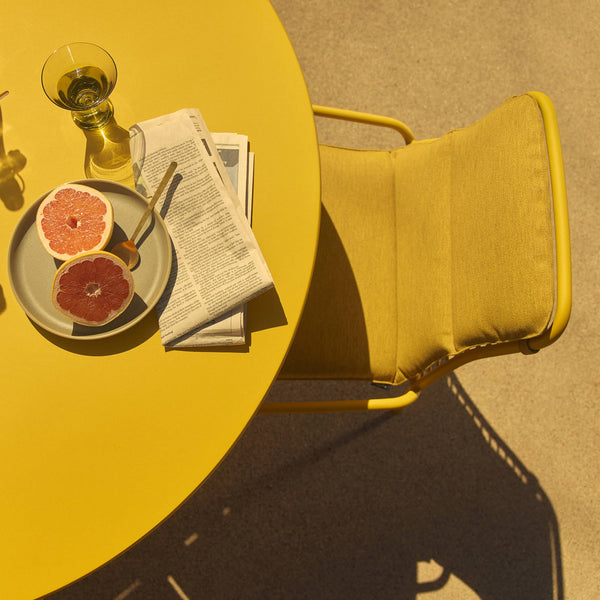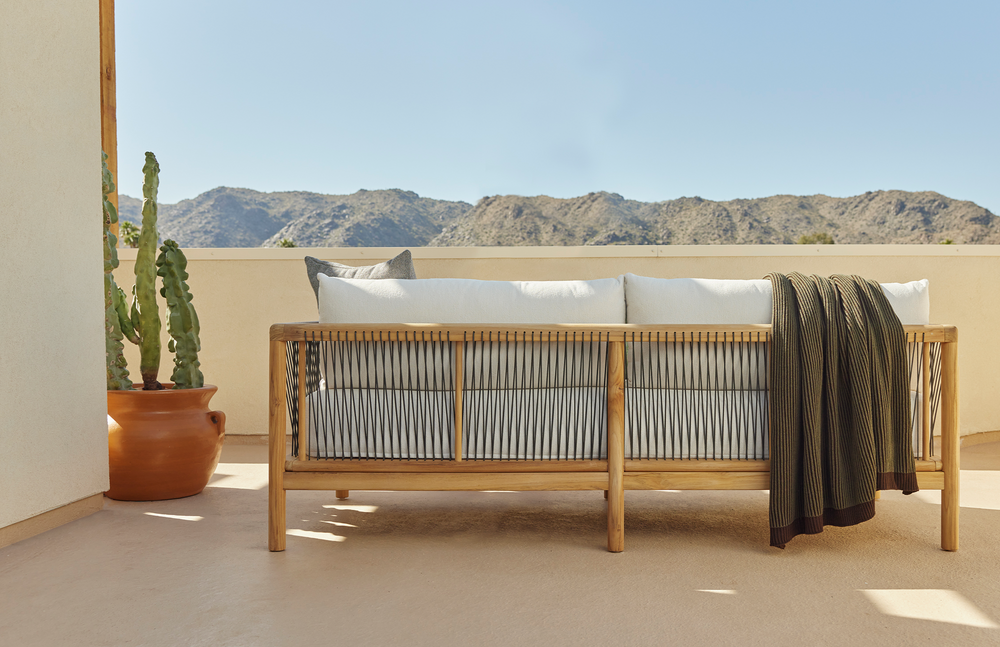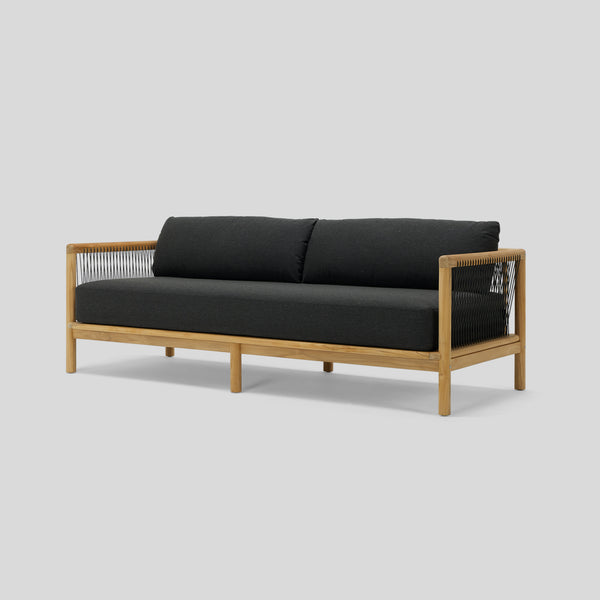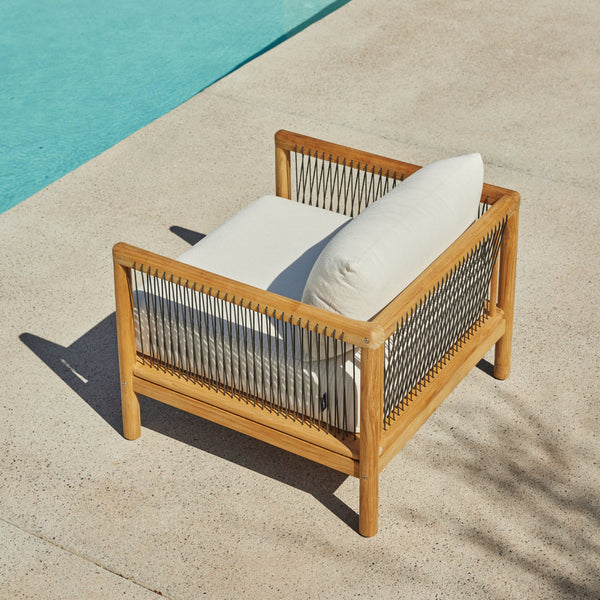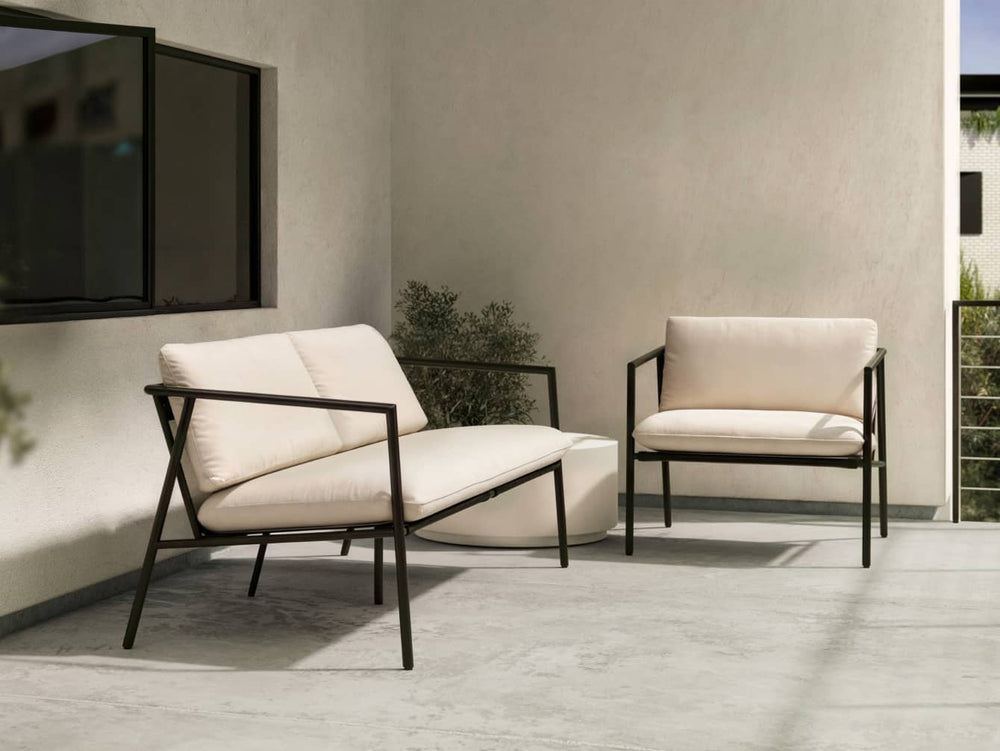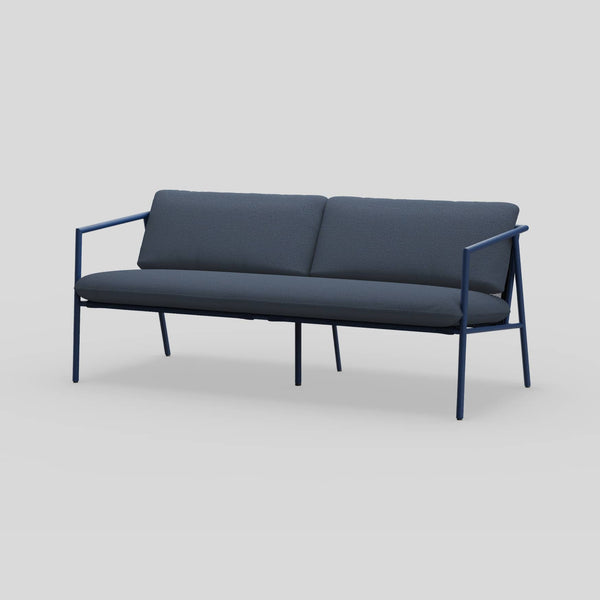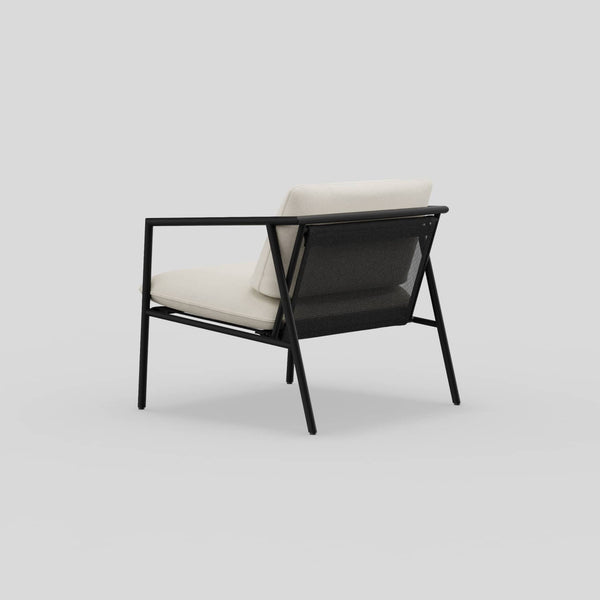Comparing Aluminum and Steel Patio Furniture: Which Is Right for You?
Written by Neighbor Editorial Team | @neighboroutdoor | Opens in a new window. |
Use this guide to understand the unique characteristics of both aluminum and steel patio furniture to make an informed decision for your outdoor space.

Creating a welcoming and functional outdoor space begins with choosing the perfect, durable furniture. Outdoor furniture can be crafted with many different materials, but one of the most commonly used—for good reason—is metal. Two of the most popular options are aluminum and steel patio furniture.
In this article, we will provide you with all the facts about the unique characteristics of these two choices. Additionally, we'll explore the impact that other material choices, such as wrought iron, teak, and more, can have on not only the aesthetics but also the functionality of your outdoor space. Understanding the strengths of each of these materials while appreciating their specific attributes will assist you in making an informed furniture decision for your outdoor space.

Aluminum Patio Furniture
Aluminum is highly sought after for outdoor furniture due to its numerous advantages. For one, it’s lightweight in nature which makes it easy to move around your outdoor space. Other benefits of aluminum patio furniture include:
-
Corrosion Resistance and Durability: A standout feature of aluminum outdoor furniture is its exceptional corrosion resistance, attributed to its ability to naturally form a protective oxide layer. This shields it from rusting and reduces the need for frequent maintenance, ensuring prolonged enjoyment of your outdoor space.
-
Low Maintenance: As mentioned, aluminum furniture is low maintenance because of its resistance to rust. Another reason it’s considered an easy-to-upkeep furniture option is because it doesn’t require regular painting or sealing to preserve its appearance.
- Powder Coating: Aluminum furniture is often powder-coated. This is a process that involves baking a protective powder coating onto the aluminum surface, enhancing its longevity against environmental conditions and its overall appearance.
Steel Patio Furniture
Steel is another commonly used material for outdoor patio furniture. Its benefits include durability, versatility, and corrosion resistance.
-
Durability and Heavy-Weight: Steel furniture, with its robust construction and considerable weight, offers exceptional durability. It’s often resilient against strong winds, making it a reliable choice for various climates.
-
Versatility and Functionality: The versatility of steel furniture is evident in its suitability for both fire pits and sectional sets. It offers an aesthetic appeal no matter which type of outdoor furniture item it’s been used to create.
- Corrosion Resistance: Steel furniture is often quite resistant to corrosion. However, the resistance level varies depending on the type of steel. Stainless steel is your best bet for optimal corrosion resistance.
Comparing Aluminum and Steel
When deciding between aluminum and steel for your outdoor furniture, it's crucial to understand both of their unique characteristics. Here's a comparison to help you make an informed choice:
-
Durability and Longevity: While both aluminum and steel are known for their durability, steel's heavier nature enhances its resistance to wear and tear. Still, aluminum furniture is not lightweight. Both types are great choices for those seeking furniture that can withstand heavy use and challenging weather conditions over an extended period.
-
Maintenance Requirements: Aluminum furniture is super low maintenance. To preserve its appearance, occasional cleaning with mild soap and water is usually sufficient. On the other hand, steel furniture benefits from regular cleaning to prevent corrosion. Applying a protective coating, such as wax, can help maintain its finish and guard against rust. Additionally, promptly addressing any scratches with touch-up paint can prevent the development of rust spots.

-
Weather-Resistance: Aluminum's natural corrosion resistance makes it inherently weather-resistant. Regular cleaning is advisable to remove dirt and prevent the buildup of contaminants. For steel, especially in environments with salt exposure, opting for galvanized or stainless steel versions enhances weather resistance. Applying a rust-resistant primer and paint provides an extra layer of protection.

-
Aesthetic Appeal: Both aluminum and steel offer versatile design options. Aluminum is liked for its sleek, modern appearance, while steel provides a classic and robust aesthetic. As mentioned, regular cleaning and the application of protective coatings can help retain both of these metals’ original look over time.
-
Customization Options: Whether you prefer bold colors or subtle finishes, both aluminum and steel are customizable. Powder coating is a popular choice for both materials, providing durability and a wide range of color choices. Regular cleaning with a mild detergent and water can help maintain the vibrancy of the chosen finish.
-
Price Considerations: While aluminum furniture may come at a higher initial cost due to its lightweight and corrosion-resistant properties, the long-term durability and low maintenance requirements often justify the investment. Steel furniture can be more affordable. Choosing corrosion-resistant versions, like stainless steel, can enhance its longevity, providing value for budget-conscious consumers.
Other Outdoor Furniture Materials
There are numerous materials utilized for outdoor furniture beyond aluminum and steel. These diverse materials, including wrought iron, teak, rattan and wicker, and cast iron offer unique aesthetics and functionality benefits that cater to diverse outdoor spaces. Let's talk about their individual benefits:
-
Wrought Iron Furniture: Wrought iron furniture seamlessly infuses outdoor spaces with timeless sophistication through intricate designs and robust durability, making it an ideal choice for vintage or traditional settings. Its enduring quality and craftsmanship effortlessly blend style and sturdiness, creating a statement piece that adds classic elegance to any outdoor environment.

-
Teak Furniture: Teak furniture offers natural beauty and durability, resisting rot and decay, with the added benefit of maturing to a silvery gray color over time. The natural elegance of teak makes it a popular choice for outdoor settings, providing a stylish and long-lasting solution.

-
Rattan and Wicker Furniture: Rattan and wicker furniture, lightweight and stylish, are commonly used for creating casual and comfortable outdoor seating and dining sets. Whether for a cozy conversation nook or a relaxed dining area, these materials add a touch of comfort and charm to outdoor spaces.
-
Cast Iron Furniture: Cast iron furniture is durable with a classic appearance, often used for decorative garden benches and tables. The ornate designs of cast iron pieces contribute to a timeless and sophisticated outdoor aesthetic, creating focal points in gardens and patios.
- Bonus: Bistro Sets: Bistro sets, available in various materials such as wrought iron, aluminum, and wood, are great for small outdoor spaces like balconies and patios. Their compact design, coupled with diverse material options, allows for flexibility in styling outdoor areas.
 What's Perfect for Your Outdoor Space?
What's Perfect for Your Outdoor Space?
Selecting outdoor furniture that suits your specific needs is essential. In order to create the perfect outdoor space, you’ll want to not only consider the furniture’s material, but you’ll also your local climate, your usage plans, and your budget.
-
Local Climate: Understanding your local climate is crucial when selecting outdoor furniture. Factors such as temperature extremes, humidity levels, and the frequency of precipitation can impact the durability and maintenance requirements of your chosen furniture materials. Opting for weather-resistant materials ensures that your outdoor furniture withstands the elements and remains in top condition over time.
-
Usage Planning: Thoughtful planning of how you intend to use your outdoor space is key to making the most of your furniture selection. Consider the size and layout of your outdoor area, and visualize how different furniture pieces can contribute to the functionality and aesthetics of the space. Whether it's creating a cozy seating area, a dining space, or a multifunctional outdoor oasis, aligning your furniture choices with your intended use enhances the overall outdoor experience.
- Setting a Budget: Establishing a budget for your outdoor furniture purchases provides a practical framework for decision-making. It helps you prioritize essential pieces, consider material options, and balance aesthetics with functionality. While outdoor furniture is an investment in your outdoor living, setting a budget ensures that you make choices aligned with your financial goals and obtain the best value for your preferences and needs.
Final Thoughts
Ultimately, the choice between aluminum and steel patio furniture depends on your specific needs and preferences. While aluminum offers lightweight flexibility and impressive corrosion resistance, steel boasts durability and substantial weight, providing resilience in challenging weather conditions. To create your dream outdoor space, considering durability, functionality, and aesthetics.
← Older Post Newer Post →

